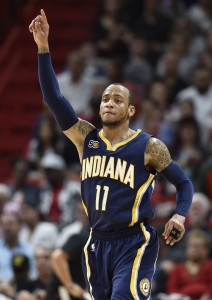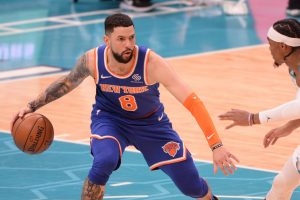All 30 of the NBA’s teams are carrying some sort of “dead money” on their respective books for the 2020/21 season. Dead money is the guaranteed salary paid or owed to a player who is no longer under contract with the team.
 In some cases, teams are carrying cap hits for players whom they released several years ago. That’s the case in Indiana, for instance, where the Pacers have a $2,245,400 cap charge for Monta Ellis this season, despite cutting him way back in July of 2017.
In some cases, teams are carrying cap hits for players whom they released several years ago. That’s the case in Indiana, for instance, where the Pacers have a $2,245,400 cap charge for Monta Ellis this season, despite cutting him way back in July of 2017.
In other situations, the dead money is a result of having waived a player more recently. The Pistons, for example, created this season’s single largest dead money cap hit when they bought out Blake Griffin, who is still counting for $32,670,565 against Detroit’s team salary in ’20/21.
Other dead money charges are far more modest. For instance, expired 10-day contracts technically count as dead money, but none of those are worth more than $110,998.
While some teams will add a little more dead money to their caps in the coming weeks when 10-day deals expire or certain players are released, it’s safe to assume that nearly all of this season’s most significant cuts have already been completed. With that in mind, we’re taking a look below at the teams carrying the most dead money for 2020/21.
Carrying a substantial amount of dead money doesn’t necessarily indicate that a club has managed its cap poorly. For instance, the Thunder and Knicks, two of the teams near the top of the list below, have the two smallest team salaries in the NBA this season.
Because they haven’t had any hard-cap or luxury-tax concerns, Oklahoma City and New York could comfortably afford to waive multiple players with guaranteed salaries in order to make room for new players, without worrying about the associated costs. The Thunder have certainly done that — their $36MM in overall dead money comes from 12 different players.
On the other end of the spectrum, the Warriors and Clippers are among the teams with the least amount of dead money on their books, which makes sense too. Golden State will have the league’s highest tax bill, while L.A. has been up against a hard cap for much of the season, so both teams have wisely avoided making any major commitments to players who won’t finish the season on the roster.
Here’s the full list of 2020/21 dead money by team, as of April 16:
- Detroit Pistons: $38,806,272
- Memphis Grizzlies: $36,052,708
- Oklahoma City Thunder: $35,926,004
- Cleveland Cavaliers: $30,396,254
- San Antonio Spurs: $24,804,677
- New York Knicks: $20,260,505
- Sacramento Kings: $9,655,830
- Charlotte Hornets: $9,043,478
- Los Angeles Lakers: $7,599,241
- Toronto Raptors: $6,818,018
- Houston Rockets: $6,017,104
- Miami Heat: $5,564,670
- Milwaukee Bucks: $5,034,894
- Portland Trail Blazers: $4,757,775
- Orlando Magic: $4,268,128
- Washington Wizards: $4,222,815
- Indiana Pacers: $3,862,401
- Denver Nuggets: $2,000,000
- Philadelphia 76ers: $1,642,981
- Brooklyn Nets: $1,635,825
- Note: This figure doesn’t include LaMarcus Aldridge‘s $554,988 cap hit, since he remains on the roster, for now, after announcing his retirement.
- Note: This figure doesn’t include LaMarcus Aldridge‘s $554,988 cap hit, since he remains on the roster, for now, after announcing his retirement.
- Dallas Mavericks: $1,620,564
- Boston Celtics: $1,131,937
- New Orleans Pelicans: $1,054,478
- Phoenix Suns: $785,285
- Utah Jazz: $770,433
- Atlanta Hawks: $744,684
- Minnesota Timberwolves: $685,340
- Golden State Warriors: $666,667
- Los Angeles Clippers: $110,998
- Chicago Bulls: $97,261
Salary information from Basketball Insiders was used in the creation of this post. Photo courtesy of USA Today Sports Images.
 However, teams may look first as players who have been in the NBA more recently. That list includes vets like
However, teams may look first as players who have been in the NBA more recently. That list includes vets like